Building SonderMind’s video platform
At SonderMind, we valued making therapy more accessible. We began looking at more diverse ways to connect clients and therapists. For 4 months, I led the design effort to expand session offerings, achieving results beyond what the company thought was possible.
Roles
Research
Testing
Design
Implementation
Platform
Mobile
Web
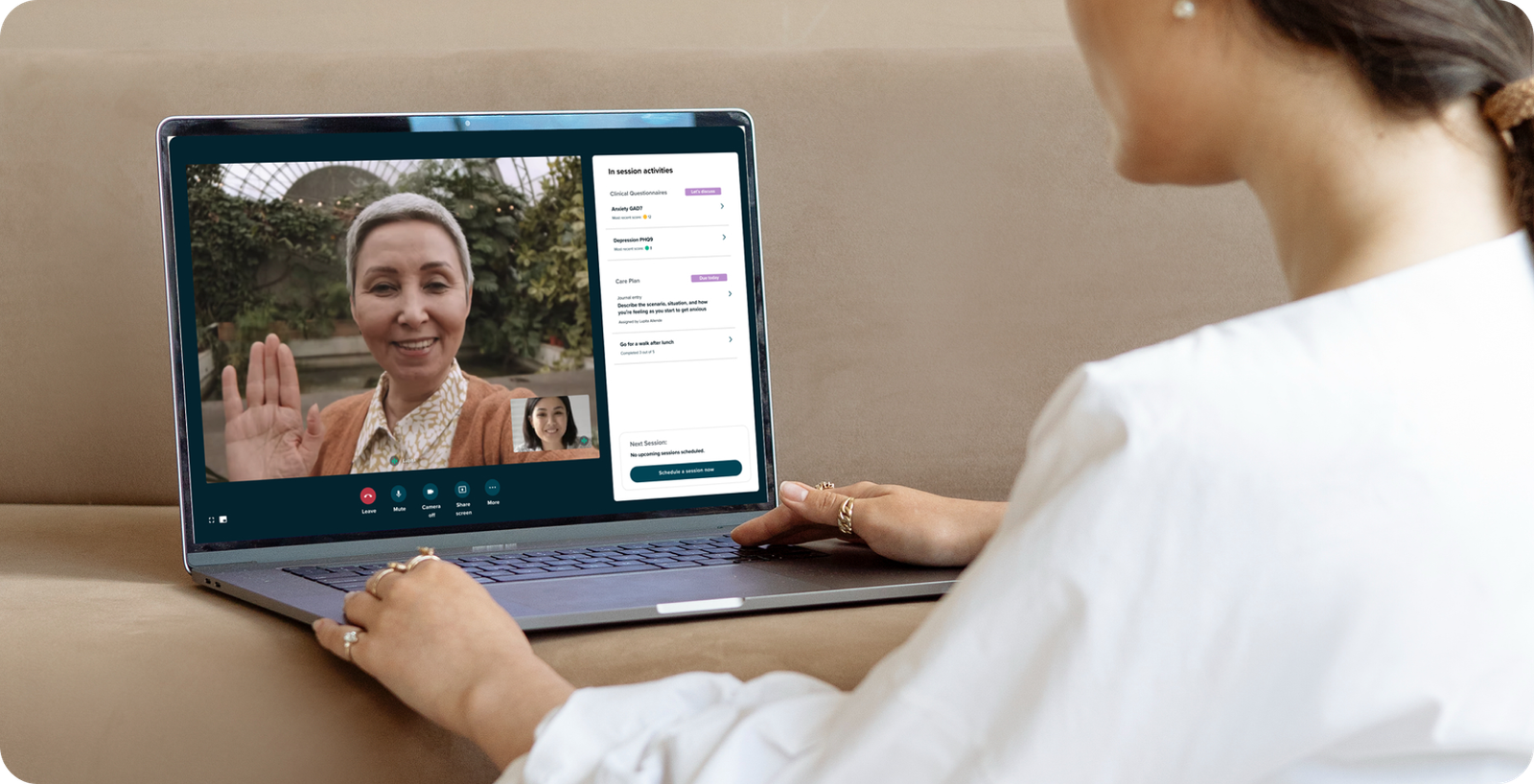
Challenges
Keeping up with competition
At the time, our primary competitors were BetterHelp and TalkSpace, both equipped with video and messaging platforms. In order to keep up with our competition, we needed to expand to remote sessions.
Our core value was the acceptance of insurance, setting us apart. Yet, the complexities of our insurance system brought about uncertainty regarding the eligibility of video or messaging sessions for coverage approval.
Misalignment in a two-sided marketplace
A significant misalignment existed between our clients and therapists. Clients wanted flexibility in terms of when and where they could engage with their therapist, with a particular emphasis on those residing in remote areas.
On the flip side, therapists expressed apprehension about embracing change. Some voiced concerns that technology “takes away from the personal connection with their clients” while others cited that they were not “tech savvy”.
Approach
In order to keep up with our competitors and appeal to new users, we assembled a group of therapists. These professionals, experienced with video platforms or eager to explore innovative approaches, willingly participated in beta testing video sessions with their clients. With executive approval, a small team was given the green light.
However, a pivotal shift occurred in March 2020 when we transitioned to remote work. This unexpected change thrust video sessions into the forefront, becoming the cornerstone of our 2020 strategy.
Expanding the scope
Initially, our plan centered around building a video platform in collaboration with our clients and therapists to gauge any impacts on their therapeutic alliance or the time it took for improvement. Simultaneously, our legal team engaged with insurance to explore coverage for these sessions.
However, as the realization set in that remote work was here to stay indefinitely, our company expedited its timeline. With an all-hands-on-deck approach, we rapidly promoted and launched video sessions. While continuing to leverage our beta group for prototype testing and interviews, we expanded access to all providers and clients.
We quickly grew our small team and shifted communication to keep the entire company up to date. I worked with Marketing and our Provider Success Coaches to produce educational and promotional materials. Our squad stand-ups shifted to both morning and evening sessions, ensuring quick issue resolution.
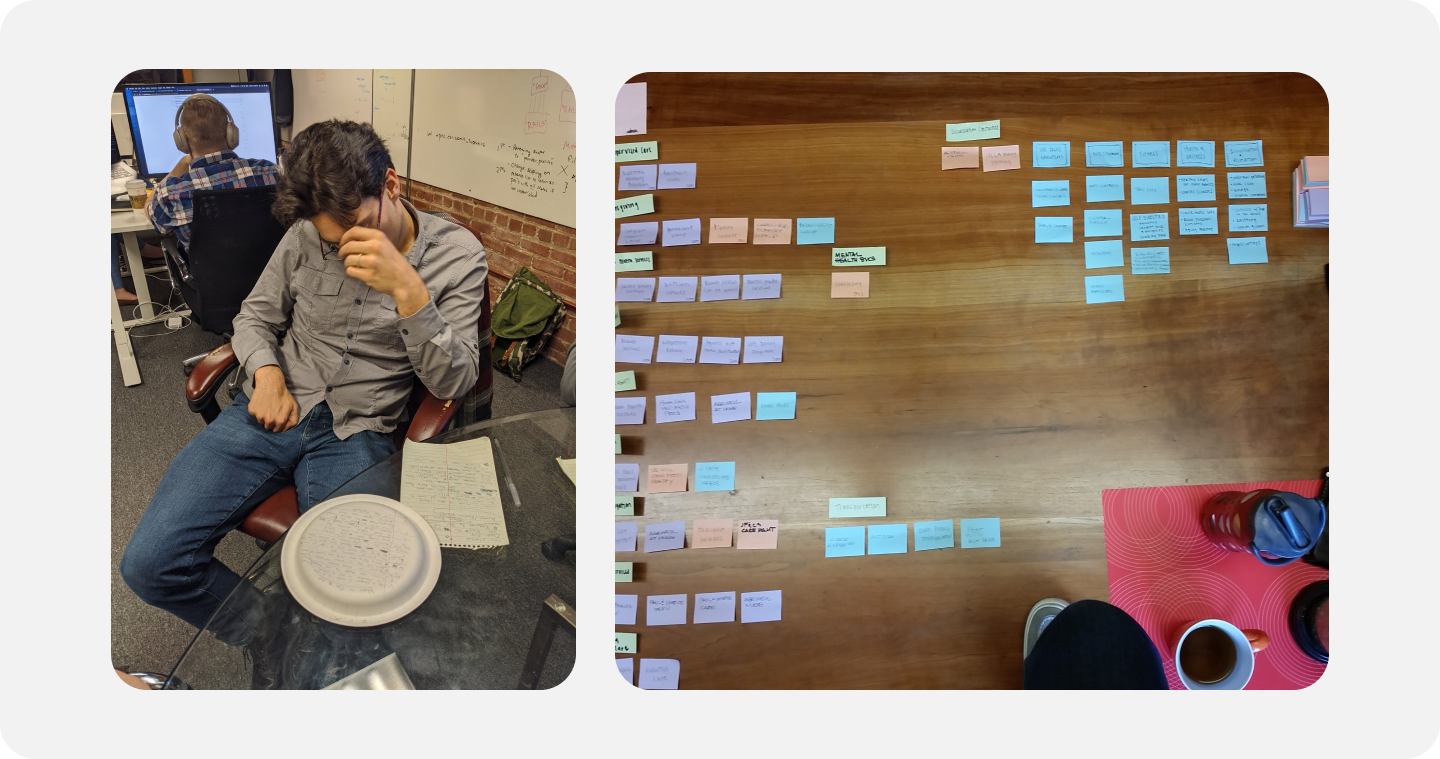
Joining a session: While the concept of joining a session was straightforward, the implementation posed nuanced challenges. We grappled with various use cases and user states, emphasizing the need for flexibility in the virtual "room." Our objective was to ensure a seamless experience, allowing clients to join without the therapist and vice versa. We also accounted for scenarios where users accidentally left the room or faced internet issues, ensuring the room stayed open for rejoining.
Furthermore, understanding the dynamics of when a therapist or a client joined the session became crucial for analyzing no-show rates. Amidst all these considerations, compliance with HIPAA regulations took center stage. Every element of our design was meticulously crafted to safeguard patient privacy and align with legal standards.
Scheduling flow and session cards: I overhauled both the scheduling flow and the client-therapist session cards to distinctly differentiate between video and in-person sessions. The goal was to provide absolute clarity on the session location and the joining process. Additionally, I extended these updates to the claim submission flow, ensuring consistent and transparent information across all relevant interfaces.
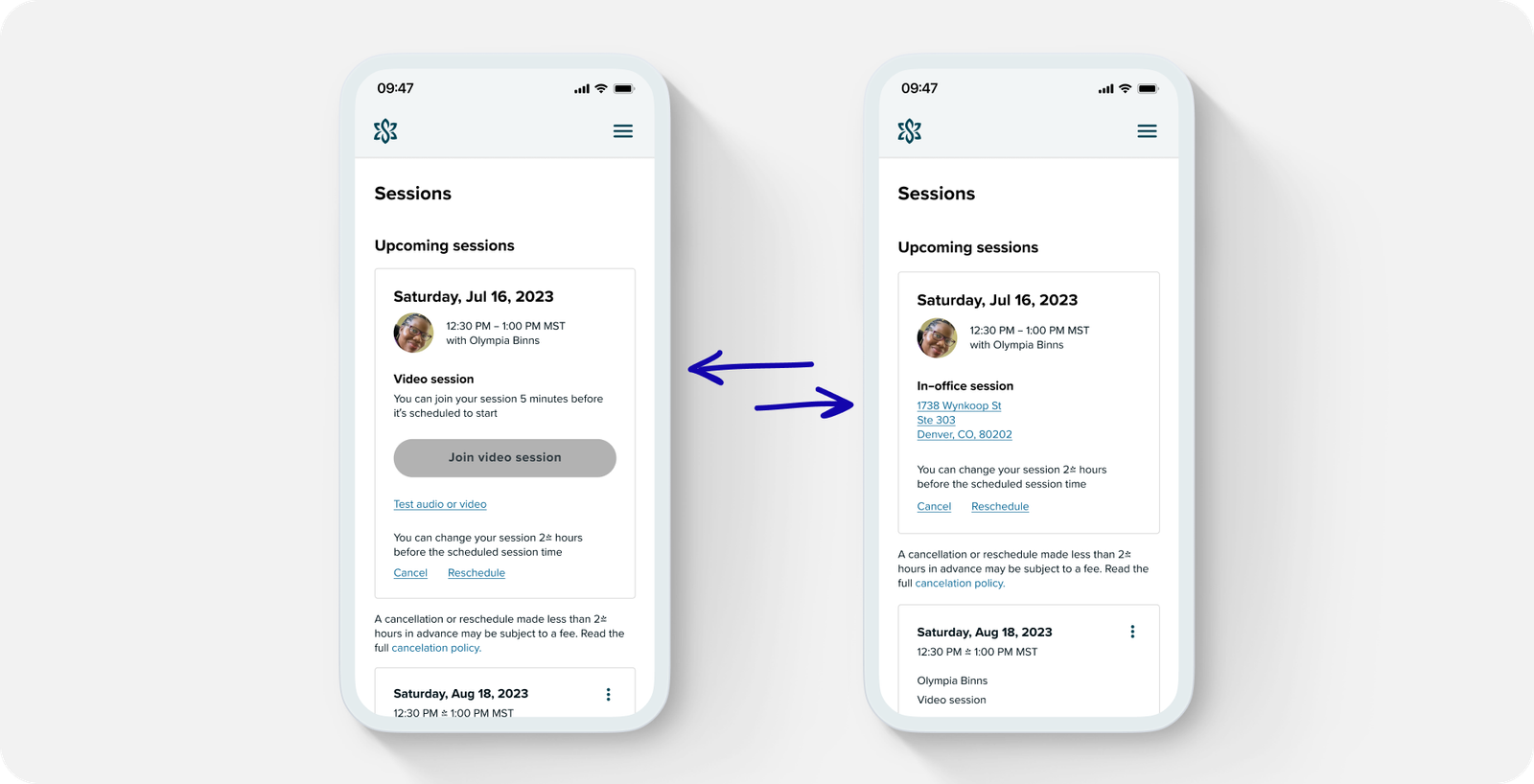
The second iteration
With continued feedback from our clients and therapists, our own data, and features from other video tools, the next set of priorities became unmistakably clear.
Audio and video testing: Technical issues garnered the most feedback, prompting a strategic approach to distinguish between user error, network glitches, and platform-related problems. Introducing audio and video troubleshooting, users gained the ability to test their audio and video both before and during a session. This feature empowered users to troubleshoot problems independently. To further refine our platform, a post-session survey was implemented, allowing clients and therapists to rate and elaborate on their overall experience.
Therapeutic Alliance survey: In our early engagements with therapists, concerns surfaced about the potential for a lack of connection in video sessions. They emphasized the significance of clients' body language in maintaining a meaningful therapeutic alliance. To address this and support providers less inclined towards change, we introduced a therapeutic alliance survey for clients. This survey, conducted for both video and in-person sessions, invited clients to rate various aspects of each session. The aim was to gain insights for both us and the therapists, aiding in a better understanding of the clients' feelings of connection during sessions.
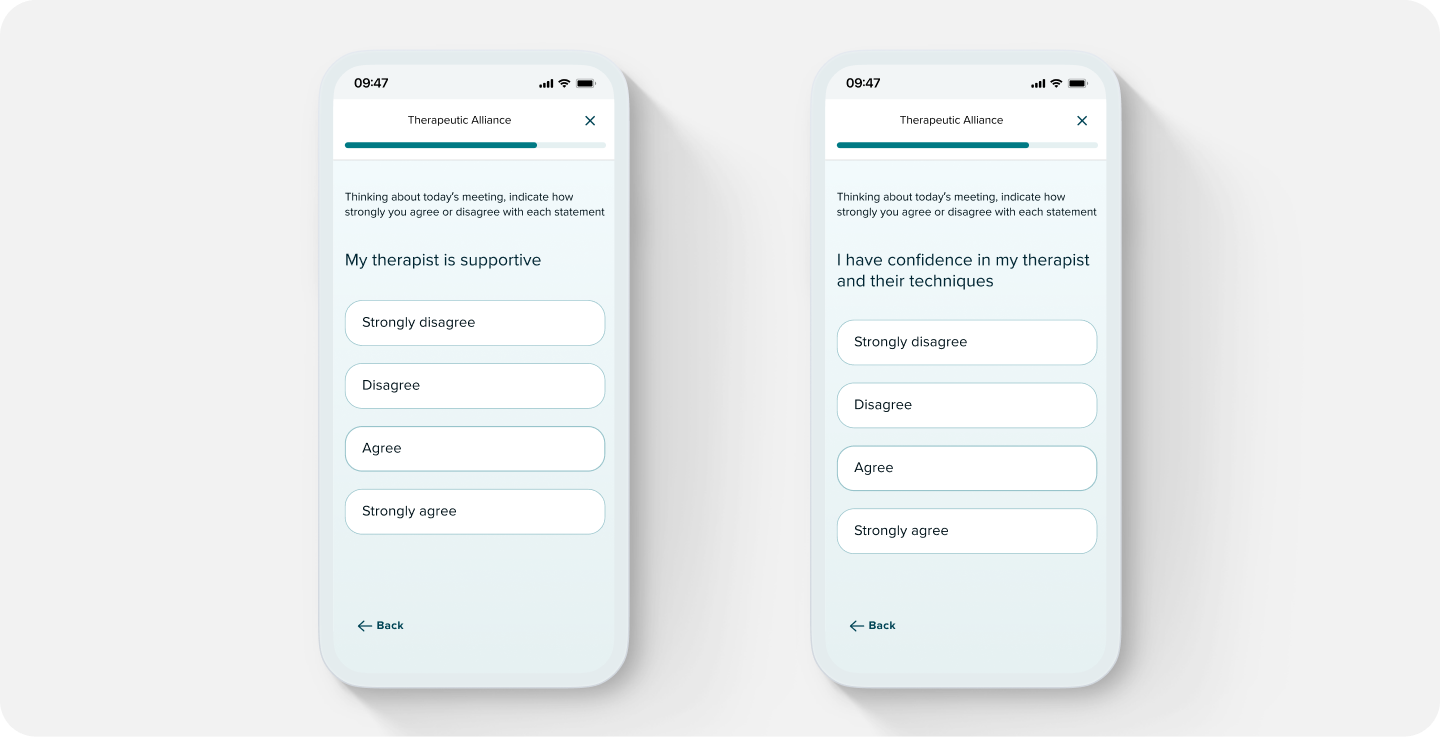
Screen share: As our video platform evolved and became more refined, providers expressed a need for screen sharing. The ability to share notes, diagrams, charts, and more emerged as a vital element for facilitating productive and engaging sessions.
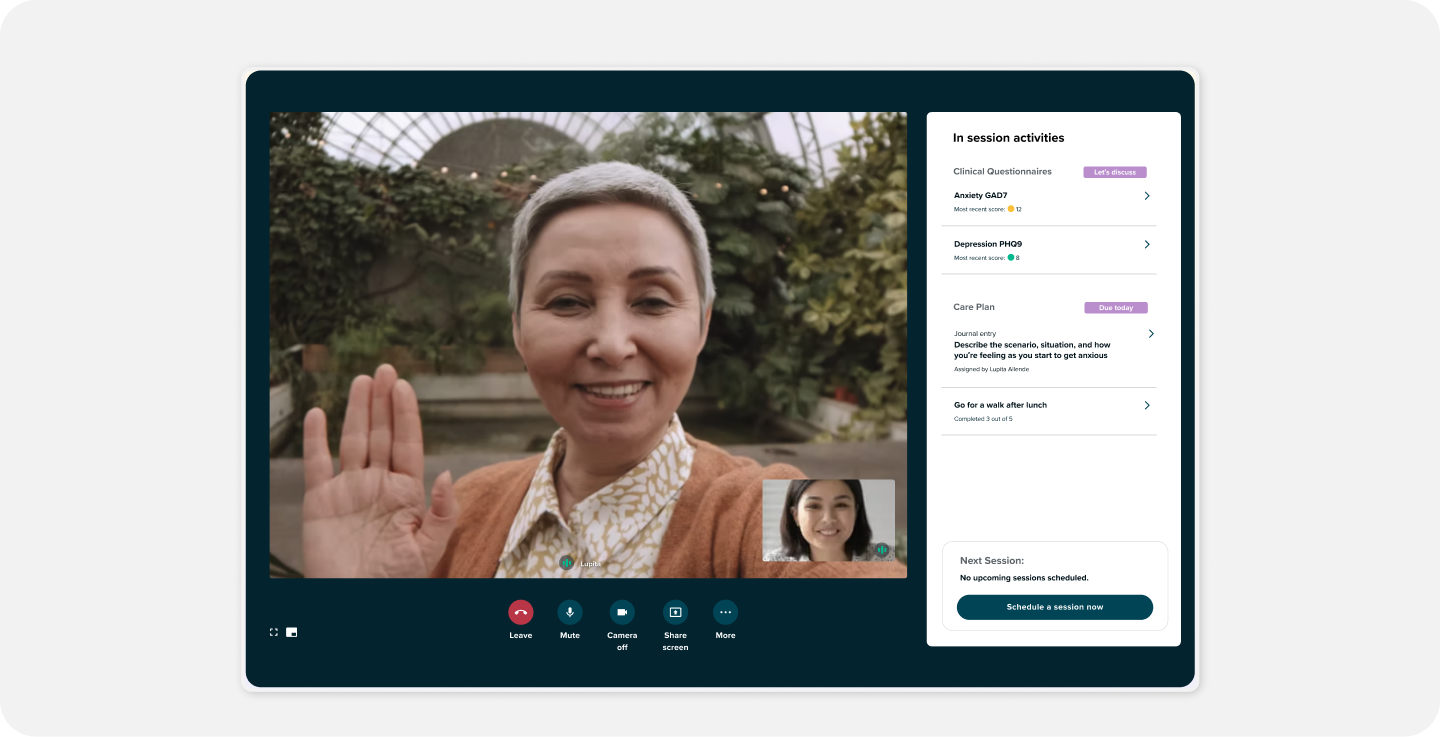
Results
Immediate adoption
Today, 90% of all claims are video sessions. As providers embraced the necessity of implementing video sessions, they uncovered the advantages for their practice. They no longer needed to rent expensive spaces. Like a lot of people, they eliminated their morning commute giving them more time to see clients and handle the administrative pieces of their practice.